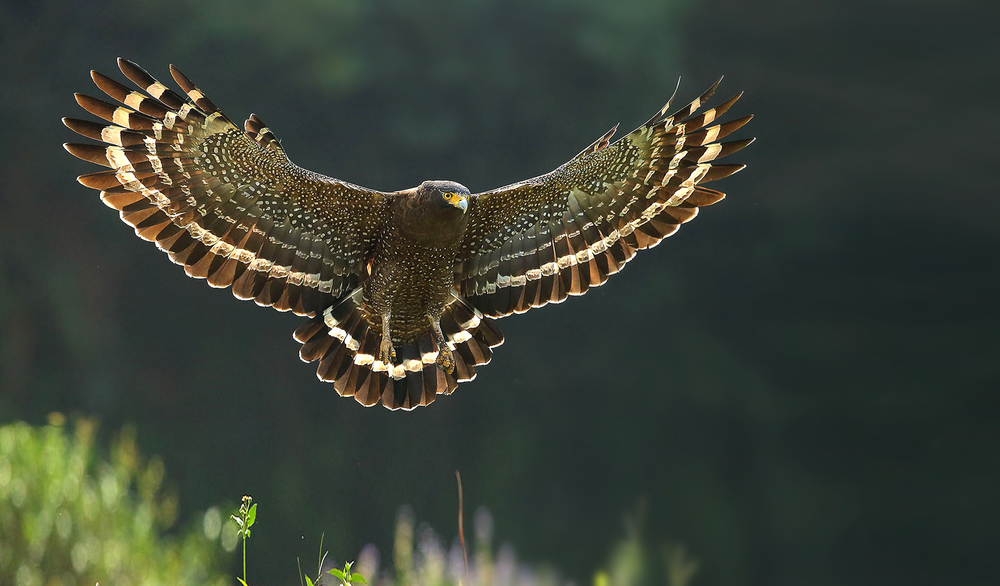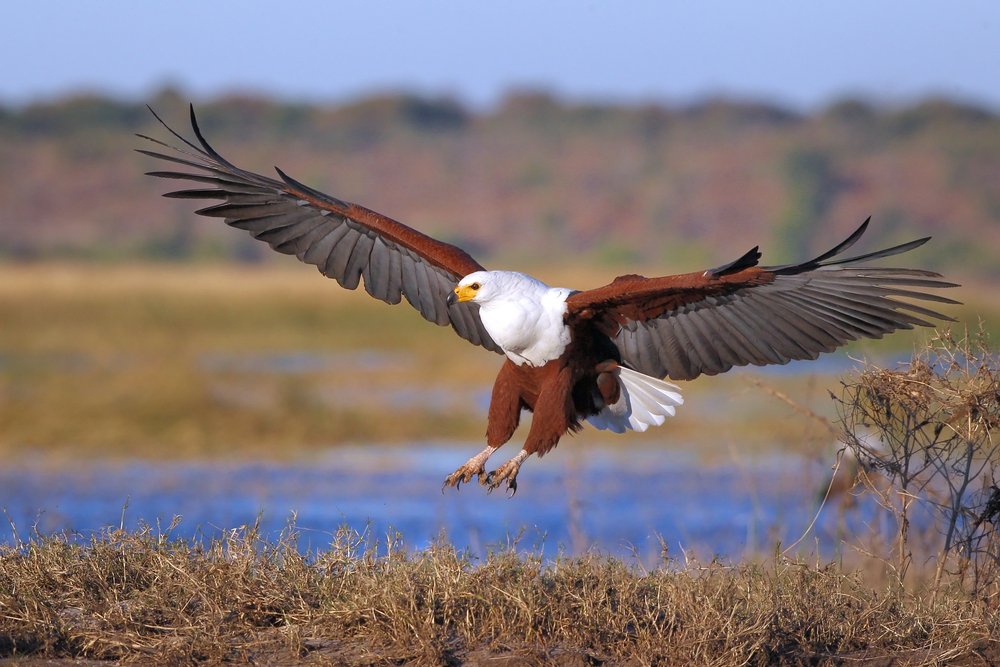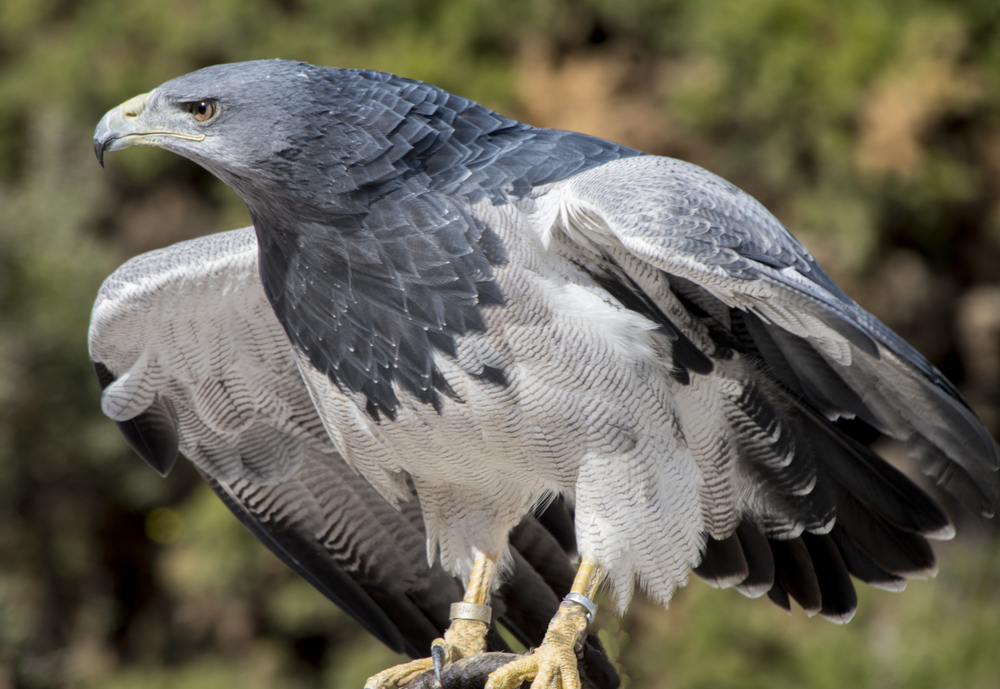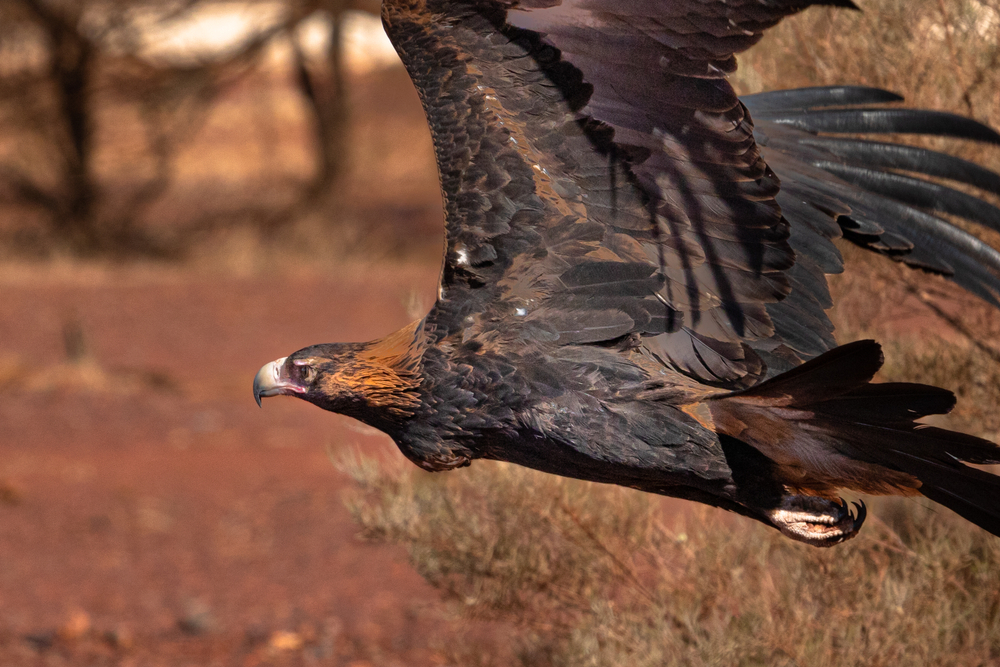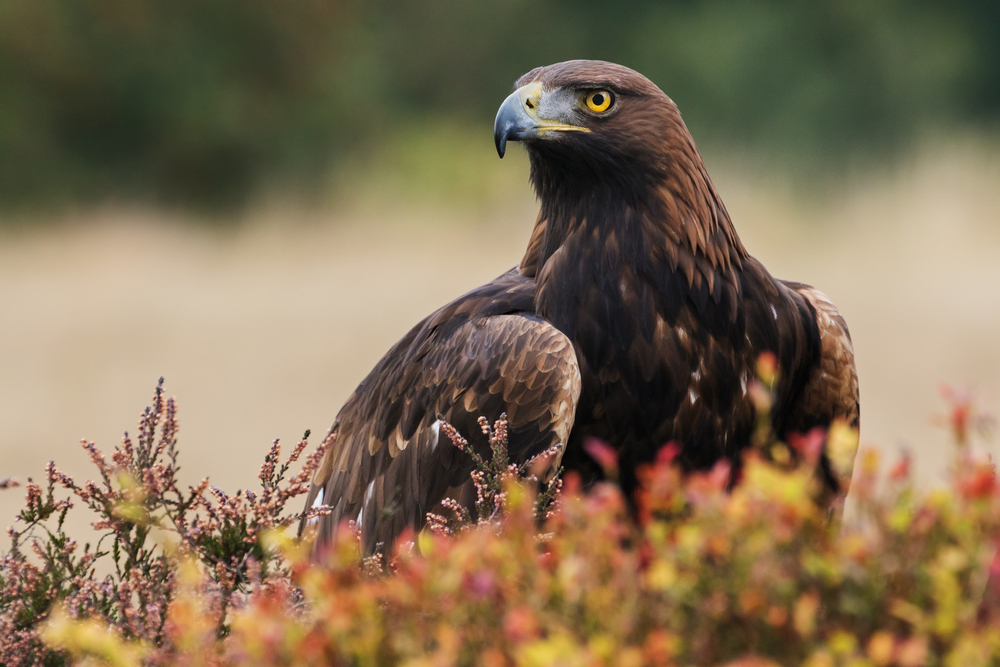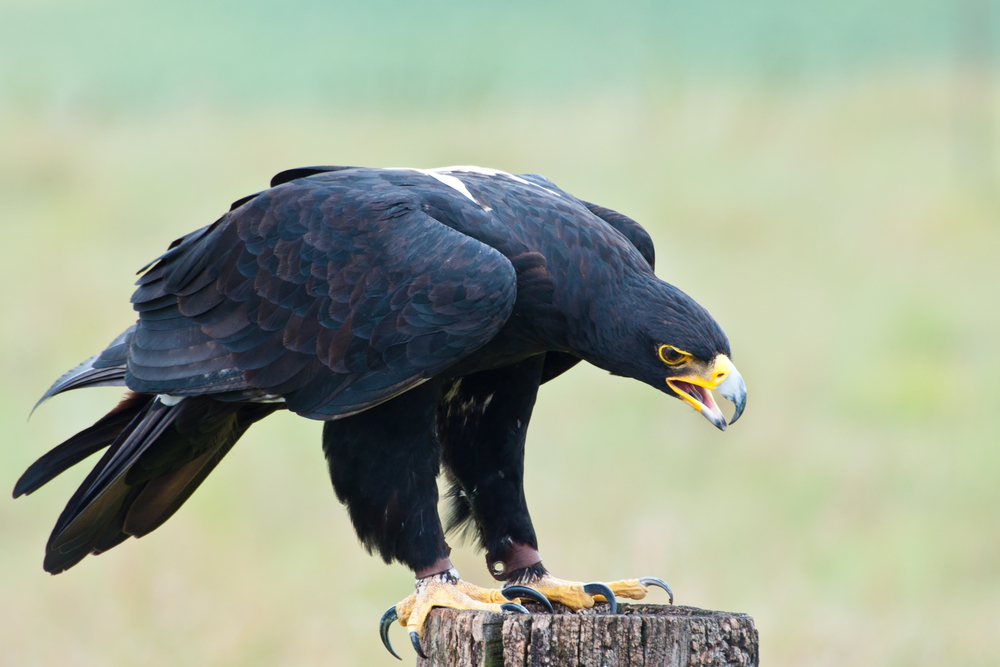The closest relatives of the Crested Serpent Eagle are other members of the genus Spilornis, such as the Philippine Serpent Eagle (Spilornis holospilus) and the Andaman Serpent Eagle (Spilornis elgini). Together, they form a group of snake-specialist eagles across Asia’s forests and islands.
About
The Crested Serpent Eagle is a medium-sized raptor widely distributed across tropical and subtropical Asia, from the Indian subcontinent through Southeast Asia to Taiwan and the Philippines. It is best known for its preference for hunting snakes and reptiles, from which it derives its name. This eagle has a distinctive appearance, with dark brown plumage, bold white barring on the wings and tail, a yellow cere and legs, and a short, bushy crest that gives it a striking silhouette. When in flight, its broad, rounded wings display prominent white and black bands, making identification easy.
Adults measure 55–75 cm (22–30 in) in length, with a wingspan of 110–165 cm (3.5–5.4 ft). Their diet consists primarily of snakes, lizards, and other reptiles, but they also take small mammals, birds, and amphibians. Using sharp eyesight and a commanding aerial presence, the Crested Serpent Eagle often perches silently before swooping down to seize prey with its strong talons. Its loud, whistling call is a familiar sound in many of the forested regions it inhabits.
Breeding occurs during the dry season, with pairs constructing large stick nests high in trees. Typically, only one egg is laid, and both parents share responsibilities in incubation and chick rearing. The young fledge after about two months but remain dependent for several more weeks. In the wild, Crested Serpent Eagles can live more than 15 years.
The scientific name of the Crested Serpent Eagle is Spilornis cheela, and it belongs to the family Accipitridae, which includes hawks, eagles, and kites. Though considered a species of Least Concern due to its wide distribution, localized threats include deforestation and habitat disturbance. Still, the Crested Serpent Eagle remains one of Asia’s most recognizable and vocal raptors, often seen soaring above forests with its distinctive call echoing across the canopy.
Physical Characteristics
The Crested Serpent Eagle (Spilornis cheela) is a medium-sized raptor found across tropical Asia, easily recognized by its bold markings and preference for snake prey.
Plumage:
Adults have a dark brown body with lighter brown mottling and a striking white-barred tail tipped with black. The underparts are lighter with fine streaking, while the wings are broad with prominent white and dark bands visible in flight.
Head and Face:
They have a large head with a short crest of feathers at the back, which can be raised when alarmed or displaying. The facial skin is bare and yellow, matching the powerful legs. Their eyes are bright yellow, giving them an intense gaze.
Body and Wings:
The body is stocky, with broad, rounded wings adapted for soaring slowly over forests and grasslands. Their relatively short tail provides maneuverability in dense woodland.
Size:
-
Length (Body): 23 to 29 in (59 to 74 cm)
-
Wingspan: 47 to 63 in (120 to 160 cm)
-
Tail Length: 9 to 11 in (23 to 28 cm)
Weight:
-
Males: 2.2 to 3.3 lbs (1 to 1.5 kg)
-
Females: 3.3 to 4.4 lbs (1.5 to 2 kg), larger than males.
The Crested Serpent Eagle’s yellow facial skin, short crest, and bold wing and tail patterns make it one of the most distinctive raptors in Asian forests.
Reproduction
The reproductive cycle of the Crested Serpent Eagle reflects its life as a forest-dwelling raptor, with solitary pairs and high parental care.
1. Mating and Courtship:
Crested Serpent Eagles form monogamous pairs and maintain territories year-round. Courtship displays include soaring flights with loud, whistling calls and occasional mutual circling by the pair.
2. Nesting:
Nests are built in tall forest trees, made of sticks and lined with green leaves. Pairs often reuse the same nesting site for multiple years, repairing and enlarging the structure each season.
3. Egg-Laying:
The female typically lays a single egg, occasionally two, between late winter and early summer depending on region. The egg is whitish with faint reddish-brown blotches.
4. Incubation:
Incubation lasts about 41 to 45 days, primarily carried out by the female, while the male hunts and provides food.
5. Raising Chicks:
The chick hatches covered in white down and is brooded closely by the female for the first two weeks. Both parents share feeding duties, bringing small reptiles, birds, and mammals.
6. Fledging and Independence:
Young fledge at about 60 to 70 days of age, but remain dependent on their parents for several more weeks before becoming fully independent.
The reproductive strategy of the Crested Serpent Eagle emphasizes low clutch size, high parental investment, and long dependency, ensuring strong survival chances for the single chick in its forest habitat.
Lifespan
The Crested Serpent Eagle is a long-lived raptor, with survival influenced by forest protection, prey availability, and human disturbance.
Lifespan in the Wild:
In their natural forest habitats, Crested Serpent Eagles typically live 12 to 18 years. Juvenile mortality is high due to predation and inexperience in hunting, but adults with established territories may live much longer.
Lifespan in Captivity:
In zoos or conservation programs, these eagles may live 20 to 25 years, benefitting from consistent food, veterinary care, and protection from natural and human threats.
Threats to the Crested Serpent Eagle:
-
Habitat Loss: Deforestation and land conversion reduce nesting and hunting grounds.
-
Human Disturbance: Logging and encroachment can disrupt breeding territories.
-
Hunting and Persecution: In some regions, they are threatened by hunting or trapping.
-
Food Scarcity: Declines in reptiles, their primary prey, may reduce reproductive success.
-
Electrocution and Collisions: Expanding infrastructure adds mortality risks.
Care and Protection:
Conservation efforts focus on forest preservation, prey protection, and reducing human disturbance. Protecting large, undisturbed forest habitats ensures their survival.
The Crested Serpent Eagle’s long lifespan and low reproductive output make habitat protection essential for sustaining populations across Asia.
Eating Habits
The Crested Serpent Eagle is a specialized predator, feeding mainly on reptiles, particularly snakes, which have given the species its name.
Diet:
Their diet is dominated by snakes and lizards, but they also consume small mammals, birds, frogs, and occasionally large insects. This specialization makes them important regulators of reptile populations in their ecosystems.
Hunting Strategy:
They are soaring and perch-hunting raptors, often seen circling above forests or perched quietly on high branches. From these vantage points, they watch for movement below before swooping down in a quick, direct strike.
Killing Technique:
Snakes and other reptiles are seized with their strong talons. Prey is either killed on the ground or carried to a perch, where it is subdued with powerful grips and torn apart with the hooked beak.
Feeding Behavior:
Crested Serpent Eagles typically hunt alone, though pairs may be seen foraging within the same territory. They often carry prey to feeding perches or directly to nests during the breeding season.
Special Considerations:
-
Snake Specialization: They are resistant to many snake strikes and capable of subduing even venomous species.
-
Opportunistic Feeding: In addition to reptiles, they adapt their diet to include other small vertebrates when reptiles are scarce.
-
Role in Ecosystem: By preying on snakes, they help maintain balance in forest and grassland ecosystems.
The Crested Serpent Eagle’s preference for snakes, combined with its soaring hunts and powerful talons, makes it one of the most specialized reptile hunters among raptors.
Uniqueness
The Crested Serpent Eagle is one of Asia’s most distinctive raptors, easily recognized by its calls, crest, and diet specialization.
Snake Specialist:
Unlike most eagles, the Crested Serpent Eagle is highly specialized in hunting snakes and reptiles, including venomous species, earning it a unique niche as a reptile regulator in Asian ecosystems.
Striking Appearance:
Its yellow facial skin and eyes, bold black chest, and distinctive white-barred wings and tail make it one of the most visually recognizable forest raptors. The short crest of feathers on the back of its head, which can be raised, gives it a commanding look.
Distinctive Call:
Known for its loud, piercing “kluee-kluee” whistle, often repeated in long series, this eagle is more often heard than seen in dense forests. Its call is a key identifier for birdwatchers and researchers.
Wide Distribution:
It is one of the most widespread raptors in Asia, ranging from India and Sri Lanka across Southeast Asia to southern China and Indonesia, adapting to a wide variety of forested and open habitats.
Ecological Role:
As a predator of snakes, it plays an important role in controlling reptile populations, balancing ecosystems in tropical and subtropical regions.
The Crested Serpent Eagle’s combination of reptile-focused diet, dramatic appearance, and iconic calls makes it one of the most unique and recognizable raptors across Asia.
Be the First to Share Photos of This Species.
FAQ’s
1. What is the closest species to the Crested Serpent Eagle?
2. How does the Crested Serpent Eagle compare to other eagles?
The Crested Serpent Eagle is smaller and stockier than large eagles like the Golden or Harpy Eagle.
Unlike generalist hunters, it is highly specialized in hunting snakes and reptiles. Its bold yellow face, short crest, and loud whistling calls set it apart from other raptors in Asian forests.
3. What national parks provide the best chance to see a Crested Serpent Eagle?
Crested Serpent Eagles are widespread across Asia. Excellent places to see them include Kanha National Park (India), Yala National Park (Sri Lanka), Khao Yai National Park (Thailand), and Gunung Leuser National Park (Indonesia), where they can often be heard calling above the forest canopy.



































































